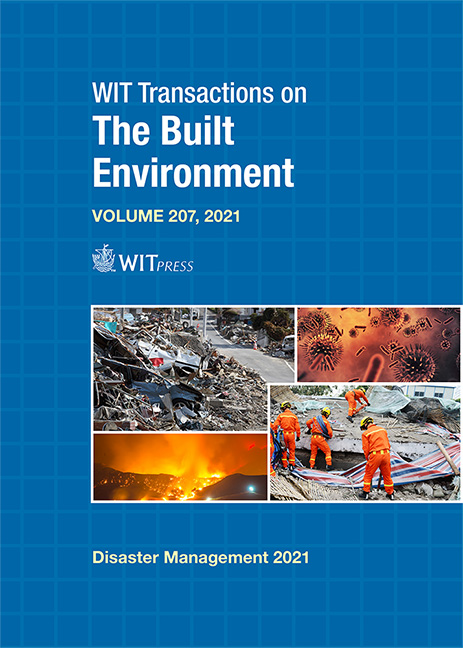SPATIAL RELATIONSHIP BETWEEN PLACEMENT OF SHRINES AND RISK OF FLOODING IN LOW-LYING AREAS AT THE EASTERN TOKYO METROPOLITAN REGION
Price
Free (open access)
Transaction
Volume
207
Pages
10
Page Range
167 - 176
Published
2022
Paper DOI
10.2495/DMAN210131
Copyright
Author(s)
HIROSHI GOTOH
Abstract
Since ancient times, in Japan, shrines and temples have been a gathering place for local people to say prayers for their well-being. Also, shrines are commonly used by communities as evacuation centers in the event of a disaster at the present time. However, if the location of the shrine in the evacuation area is vulnerable to disasters, then the ramifications in terms of safety could be very serious. In this study, the author examined the spatial distribution of shrines in low-lying areas of eastern Tokyo. Recently, it was reported that shrines damaged by the tsunami that followed the Great East Japan Earthquake are related to the kind of main deities. In particular, since extensive ground subsidence has occurred in the low lying areas of eastern Tokyo, the author investigated the ground height before ground subsidence occurred based on land subsidence data, and considered the relationship between the ground height and the enshrined main deities at shrines taking into account with the danger of flood damage. The area where the shrine is located is thought to have existed as a town since ancient times. As a result, the area is generally considered to be less affected by floods. The information obtained from this survey will confirm the truth of this tradition, and will be useful for the management of urban planning from the viewpoint of disaster prevention.
Keywords
shrine, deities, low-lying areas of Tokyo, evacuation areas, subsidence, flood hazard




